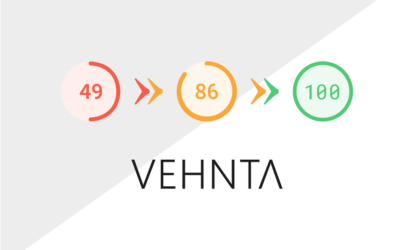Search Intent should be a basic concept for digital marketing specialists; however, it might not be the same for sales experts.
In this post, we will outline the importance of Search Intent, define a shareable modus operandi, and understand how the sales department can be very helpful for this activity.
Indeed, relationships between marketing and sales should be collaborative: marketing should provide the sales department with qualified leads, whereas sales should supply marketing with useful feedback to have interesting insights for the campaigns to come.
To refresh knowledge or to discover a new concept, we would like to start with the definition of Search Intent.
What is Search Intent?
Search Intent, sometimes called Keyword Intent, is the study and analysis of a person’s final objective using a search engine. Therefore, it is an activity to identify what a person expects to get in the search result pages. To undertake such an activity, we will need to study the intent of the research and, at the same time, the possible queries or keywords that this person could use to reach their aim.
As always, within the marketing sphere, the chance to intercept a need in advance gives a significant advantage. That’s why understanding a user’s search intent, even before this person runs a search, allows a more precise approach to build the relationship, or, in different cases, it can help start negotiation from a more favorable position than the competitors’ one.
In brief, this activity concerns understanding what the user might be looking for: their needs, problems, or objectives. It is one of the marketing bases.
Different search modes on engines
To start a Search Intent activity online, we can find a multitude of tools that rely on past search history and predictive algorithms. This software analyzes time trends and the use of specific queries and keywords. In addition to that, they can also provide data on future trends. However, this is not the topic of this post. If you want to deepen your knowledge on this subject, we suggest an article in the Search Engine Journal.
Let’s now examine how Search Intent is differentiated. By tradition, Search Intent is divided into query clusters: navigational, informational, and transactional.
Navigational cluster
As the word itself suggests, these researches entail a need for information or in-depth analyses. However, the purpose of these researches is not only to collect data or in-depth analyses: they can indeed be the first approach to a purchase action or the search for a resolution to a problem. In this case, the task of the search engine is to help in the research path or to inspire.
Informational cluster
These are researches that users run to reach an already known page, such as the one of a website or a brand they have already viewed. In this case, the user expects to find something that they have already in mind or already knows. Therefore, the search engine’s task is to accompany the user in the research activity.
Transactional cluster
Instead, the third case concerns research that will have to help the user take a specific action: in other words, it is a transaction. It could be both a transaction of a product, service, or subscription: it is undoubtedly a precise and defined action. In this case, the task of the search engine is to ease the transaction.
And the ones that do not clearly know what they are looking for
Finally, there is also the case of users who do not know what they are looking for. In this case, suggestion tools, such as the well-known Google autofill function, help the user with the research. They channel the user’s intentions and display them the most plausible answers for the available information. In this last case, the task of the search engine is to help the user find their way.
How to start a Search Intent activity?
As mentioned, we need to look for the user’s needs. The need can define the potential customer’s situation: its state and intentions. To deepen this point with a view to strategic selling, click here Data analysis and intuition: how to choose potential customers.
Search Intent is therefore fundamental because it responds to a need: it meets a problem that must be solved.
As previously described, many online tools exist for the Search Intent activity. Here in Vehnta, beyond the contribution of software, we suggest establishing close cooperation between marketing and sales to collect potential search intents and select the keywords that materialize those intents.
By using only software, indeed, we can conduct quantitative analyses connected to the massive use of the users. However, some other users, maybe niche clusters that are more expert and closer to the purchase transaction, could use more jargon and technical terms for their research. In this case, marketing tools may not be of much help; instead, the experience of salespeople could be the right source of information.
Common sayings, jargon, and technical expressions can indeed make a difference. Only those who deeply know the field and are used to talking daily with customers and prospects can be a source of this kind of information. We are therefore talking about people who have strong and established business relationships. In short, a salesman.
Can a Search Intent activity, therefore, be defined as digital marketing?
According to what we have previously stated, Search Intent activity assumes characteristics that overstep digital marketing boundaries. Indeed it is a concept that has its origin in the digital sphere. Still, it is also true that trying to speak the language of our own’s customers or potential customers is an aspect that the best salespeople have successfully performed for ages.
Therefore, the point is to combine the present and future of digital tools with the experience of the sales department. We have to find once again the cooperation that allows both departments to achieve their objectives.
Do you want to know more? Contact us by filling in the following form.






